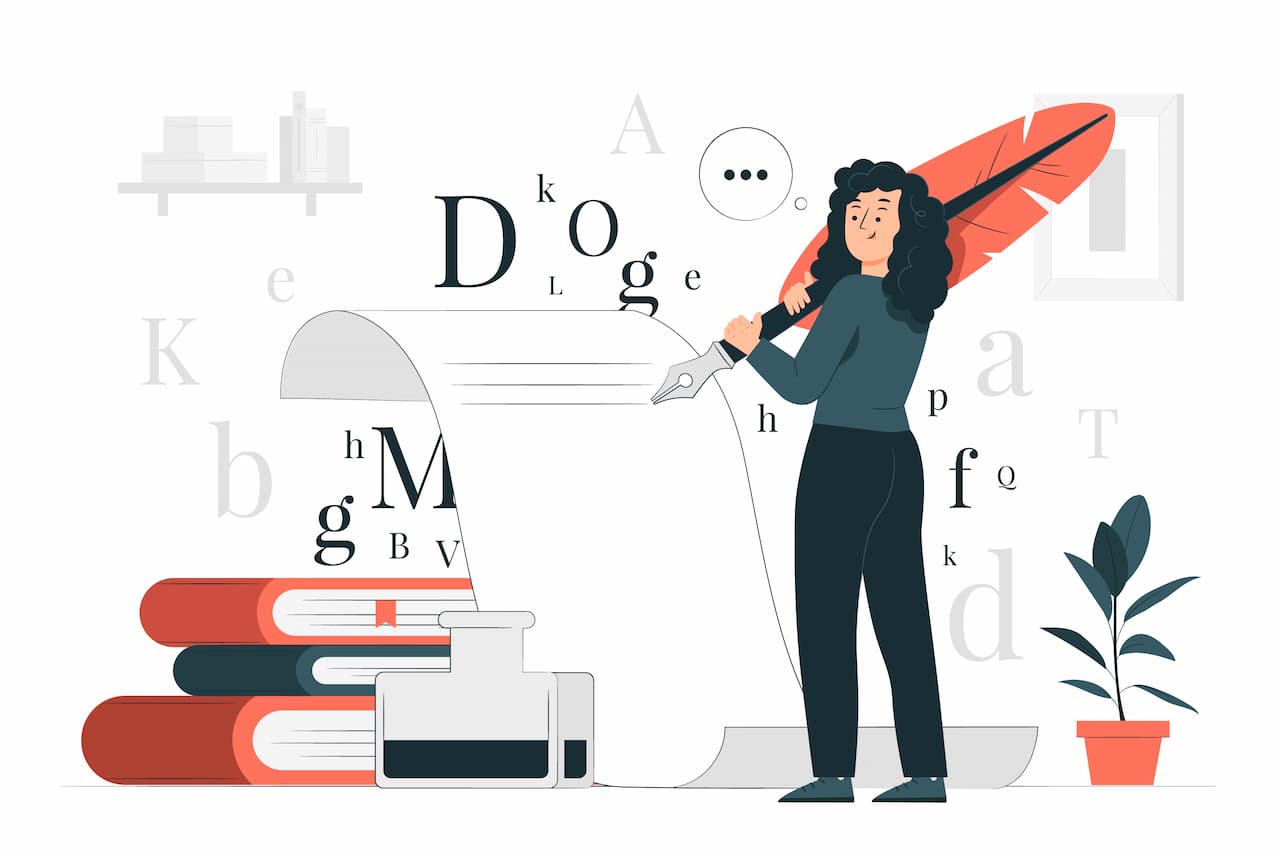
10 Translation Techniques You Must Know to Help Your Work
Translation is a bridge that connects diverse cultures, languages, and people. Considering these complex elements, there are types of translation techniques that come to the rescue to help translators deliver a seamless translation. A certain method might be the best for some translators to translate the whole document. Meanwhile, others prefer another technique.
Whether you're a professional translator or simply trying to convey a message accurately across languages, understanding various translation techniques is essential for ensuring effective communication. Choosing the right method of translation is also helpful for translators to deliver each linguistic element accurately.
In this article, we will explore ten different translation techniques that can significantly improve your work, whether you're translating literature, documents, or simply trying to enhance your language skills.
Direct Translation Techniques
Direct translation techniques aim to maintain the source language's structure and meaning as closely as possible in the target language.
These techniques are often used when precise equivalence is required, such as in legal, technical, or scientific documents. Examples of direct translation techniques include:
Borrowing

Borrowing is a direct translation technique that involves the use of words from the source language into the target language without any significant alteration. This method is often employed when the translator finds that the source language term carries a unique cultural or technical connotation that does not have the appropriate equivalence in the target language.
As the name suggests, borrowing isn't really a technique as it just borrows a word and puts it in the translation document. Borrowing can also occur when a particular word or phrase has become widely adopted in the target language due to its significance or cultural impact.
For example, in English, we commonly use the term "rendezvous," borrowed from the French language, to refer to a meeting or appointment. The word "rendezvous" maintains its original French pronunciation and conveys a sense of sophistication and formality that is not easily replicated by a direct translation.
Calque
Calque is a technique that directly translates a phrase from the source language into the target language - word-for-word to maintain the individual words' original meanings. While calques may retain the literal structure of the source text, they can sometimes result in awkward or non-idiomatic language in the target text.
A classic example of calque is the English word "skyscraper," which is a direct translation of the French term "gratte-ciel." In this case, the individual words "sky" and "scraper" were taken from French and used to describe tall buildings, even though this structure may not be immediately intuitive to native English speakers. Calques are often used in technical or scientific fields where maintaining precision and adherence to original terminology is critical.
Literal Translation
Literal translation is a direct translation technique that aims to preserve the source text's structure and meaning as closely as possible in the target language. This technique is characterized by a word-for-word approach.
While literal translation can be useful in contexts, it may not always produce a natural or comprehensible translation. In legal and technical documents, for example, where specific terms and precise meanings are paramount, literal translation is often favored.
An example of literal translation can be seen in translating the Chinese phrase "红烧鱼" directly to English as "red-cooked fish." While this maintains the original structure, it might not be immediately clear to English speakers who are not familiar with the term's cultural and culinary context.
Read also: Translators and Interpreters, They're Different!
Indirect Translation Techniques
On the other hand, indirect translation techniques prioritize conveying the meaning, intent, and context of the source text while allowing for more flexibility in adapting the content to the target language.
These techniques are often used when the source language and target language have significant structural or cultural differences. Consequently, making a word-for-word translation will be less effective.
Transposition
Transposition is a vital translation technique that involves changing the word order or structure while preserving the meaning of the text. This technique is especially useful when translating from languages with different syntax structures. To successfully apply transposition, a translator must have a deep understanding of both the source and target languages.
For example, in English, we typically use the subject-verb-object (SVO) sentence structure. However, in many languages like Japanese, the structure is subject-object-verb (SOV). To translate a Japanese sentence to English, a translator must use transposition to reorganize the elements into SVO structure. The most important translation tip is to make the text flow naturally, preserving the original meaning and transposition is the best way to do it.
Modulation
Modulation is a translation technique used to convey the same meaning in a different way. This often involves changing the perspective or viewpoint while keeping the essence of the message intact. Modulation is particularly effective when translating idiomatic expressions, cultural nuances, or metaphors.
So, how to translate the French phrase "C'est la fin du monde" into English? In direct translation, it will be "It's the end of the world" which may not capture the intended meaning. Instead, a skilled translator would use modulation to convey the sense of dramatic despair while maintaining cultural relevance by saying, "It's a catastrophe."
Equivalence
If you’re looking for translation tips for proverbs, idioms, or slogans, equivalence or reformulation is your go-to solution. Equivalence is a fundamental concept in translation that emphasizes maintaining the same level of meaning, style, and tone in the target language as in the source language.
It involves selecting words, phrases, or idiomatic expressions that convey the original message as closely as possible. Achieving equivalence can be challenging, as languages often have unique cultural and contextual connotations.
However, skilled translators aim to balance this by understanding the cultural context of both languages and choosing words that convey the same impact, even if they aren't literal translations.
Adaptation
Cultural adaptation is a technique that goes beyond language translation. It involves adjusting the content to suit the cultural norms, values, and references of the target audience. Cultural adaptation is essential when translating literature, marketing materials, or any content that relies heavily on cultural context.
For example, a marketing campaign that uses humor or references specific cultural events in the source language may not resonate with a different culture. Instead of directly translating the humor, the translators should find the cultural substitution and replace the original phrase.
This is also crucial in localizing a video game as translators need to deliver a narrative and storyline that are acceptable and convenient to the target language. That way, players wouldn't feel alienated as the game environment has been designed to be culture-friendly to them. So, it's about how to appeal to another language's culture.
Expansion

Expansion is a technique used when a source text is too concise for the target audience, and additional information is required to convey the intended meaning. It involves adding details and explanations to make the translation more comprehensive.
For example, if translating a technical manual written in German into English, the translator may need to amplify the content by providing additional explanations and clarifications to ensure that English-speaking readers can understand the instructions thoroughly.
Read also: 10 Steps to Becoming a Professional Translator
Reduction
Reduction, on the other hand, is a technique used when a text is overly detailed, and it needs to be condensed for the target audience. This process involves eliminating redundancies and unnecessary information while preserving the core message.
For instance, a lengthy legal document in Spanish may need a reduction when translated into English. The translator's task is to make the content more concise and straightforward. The goal is to ensure that it remains legally accurate but is easier to understand for English-speaking readers.
Compensation
Compensation is a translation technique used to make up for something that cannot be directly translated. This often occurs when a particular word, phrase, or concept has no direct equivalent in the target language. Translators use compensation to convey the missing information through other means, such as providing a brief explanation or using a related term.
A common example of compensation is translating the German word "Schadenfreude" into English. Since there is no single English word that directly corresponds to "Schadenfreude" (taking pleasure in someone else's misfortune), a translator may compensate by providing a definition or using the term within a suitable context.
How to Choose the Right Translation Technique?

Choosing the right translation technique is a critical aspect of effective translation. The choice depends on various factors, including the nature of the text, the languages involved, the target audience, and the desired outcome. Here are some considerations to help you select the most appropriate translation technique:
1. Understand the Source Text
Begin by thoroughly understanding the source text. What is the subject matter, tone, and style? Are there any idiomatic expressions, metaphors, or cultural references that need special attention? Understanding the source text is the foundation for selecting the right translation technique.
2. Think About the Purpose of Translation
Determine the purpose of the translation. Is it for informative, persuasive, or expressive purposes? Different texts may require different techniques. For example, a legal document may prioritize precision and equivalence, while translation in video games requires adaptation and cultural sensitivity.
Read also: DeepL Translator, Is It Better Than Google Translate?
3. Know the Target Audience
Consider the needs and expectations of the target audience. Is the translation intended for a general readership, a specialized audience, or a specific cultural group? Tailoring the translation to the target audience's preferences and cultural background can help make one that appeals to them.
4. Analyze Language Pair Differences
Recognize the linguistic and structural differences between the source and target languages. If the languages have different syntax, word order, or grammatical rules, transposition may be necessary to maintain fluency and readability.
5. Identify Cultural Nuances
Be aware of cultural nuances and references in both the source and target languages. Cultural adaptation or modulation might be needed to ensure the message remains relevant and understandable in the target culture.
Final Thought
Ultimately, the choice of the right translation technique is a dynamic and nuanced process that requires careful consideration. However, mastering different methods for translation would greatly enhance the process as you can combine them for different conditions.
Applying these techniques thoughtfully can bridge linguistic and cultural gaps, facilitating better communication and understanding in an increasingly globalized world.
Read also: Localization vs Translation, Choose The Right One!